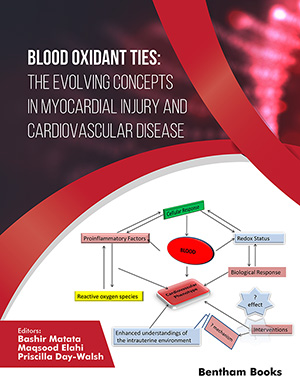Abstract
Background: There is a need to analyse the current approach to beta-blocker (BB) use in relation to exercise-based stress tests.
Objective: We compared various guidelines regarding recommending abrupt vs. gradual discontinuation of BB prior to exercise tests. We also analyse the shortcomings of the currently recommended approach and suggest a new approach to avoid BB rebound.
Methods: A narrative review is used to analyse this topic due to the lack of valid randomized clinical trials.
Results: Omitting the BB therapy prior to exercise-based test has been recommended in guidelines for many years. Although reasonable, this approach has potential disadvantages since sudden BB withdrawal may induce a rebound phenomenon, which is also acknowledged in several guidelines.
Conclusion: We observed inconsistency among relevant guidelines; there is no homogenous approach regarding BB use before exercise tests. Most guidelines recommend BB withdrawal for a couple of days before the test; they do not advise BB dose tapering. This approach is not standardised and raises the risk of BB rebound phenomenon before and during the test. Therefore, we suggest using half the prescribed BB dose at the usual time of administration (in the morning, prior to the exercise test).
Keywords: Beta-blocker, exercise test, rebound phenomenon, withdrawal syndrome, chronic coronary syndrome, oxygen supply.
[http://dx.doi.org/10.15420/ecr.2018.26.1] [PMID: 31131033]
[http://dx.doi.org/10.1093/eurheartj/ehz425] [PMID: 31504439]
[http://dx.doi.org/10.1093/eurheartj/eht296] [PMID: 23996286]
[http://dx.doi.org/10.1080/08037051.2017.1346458] [PMID: 28701047]
[http://dx.doi.org/10.1016/j.jcrc.2018.12.003] [PMID: 30540967]
[http://dx.doi.org/10.1038/s41598-017-10301-5] [PMID: 28842666]
[http://dx.doi.org/10.1007/s10286-018-0572-5] [PMID: 30413906]
[PMID: 16091647]
[http://dx.doi.org/10.1016/S0735-1097(99)00150-3] [PMID: 10362225]
[http://dx.doi.org/10.1016/S0735-1097(02)02848-6] [PMID: 12570960]
[http://dx.doi.org/10.1016/S0735-1097(02)02164-2] [PMID: 12392846]
[http://dx.doi.org/10.1530/ERP-18-0068] [PMID: 30921767]
[PMID: 23166211]
[http://dx.doi.org/10.1371/journal.pmed.1000097] [PMID: 19621072]
[http://dx.doi.org/10.1016/j.cjca.2014.05.013] [PMID: 25064578]
[http://dx.doi.org/10.1161/01.CIR.82.6.2286] [PMID: 2242557]
[http://dx.doi.org/10.1161/01.CIR.91.2.580] [PMID: 7805272]
[http://dx.doi.org/10.1161/hc3901.095960] [PMID: 11581152]
[http://dx.doi.org/10.1186/1476-7120-2-14] [PMID: 15320951]
[http://dx.doi.org/10.1016/j.echo.2007.07.003] [PMID: 17765820]
[http://dx.doi.org/10.1093/ejechocard/jen175] [PMID: 18579481]
[http://dx.doi.org/10.1093/eurheartj/ehn492] [PMID: 19001473]
[http://dx.doi.org/10.1161/CIR.0b013e31829b5b44] [PMID: 23877260]
[http://dx.doi.org/10.1186/2008-2231-21-8] [PMID: 23351617]
[http://dx.doi.org/10.1136/heartasia-2016-010736] [PMID: 27326241]
[http://dx.doi.org/10.1186/s12947-017-0099-2] [PMID: 28327159]
[http://dx.doi.org/10.3399/bjgp18X695693] [PMID: 29592946]
[http://dx.doi.org/10.1136/heart.90.suppl_1.i1] [PMID: 14676223]
[http://dx.doi.org/10.2967/jnmt.108.056465] [PMID: 18703619]
[http://dx.doi.org/10.1093/eurheartj/ehl001] [PMID: 16735367]
[http://dx.doi.org/10.1097/MNM.0b013e32836171eb] [PMID: 23719150]
[http://dx.doi.org/10.5935/2359-4802.20160035]
[http://dx.doi.org/10.1093/eurheartj/14.7.969] [PMID: 8375424]
[PMID: 9207652]
[http://dx.doi.org/10.1038/s41440-020-0449-6] [PMID: 32382156]
[http://dx.doi.org/10.5633/amm.2018.0420]
[http://dx.doi.org/10.1093/eurheartj/ehy339] [PMID: 30165516]
[http://dx.doi.org/10.1093/eurheartj/eht151] [PMID: 23771844]
[http://dx.doi.org/10.1016/j.jacc.2017.11.006] [PMID: 29146535]
[http://dx.doi.org/10.1038/s41440-019-0284-9] [PMID: 31375757]
[http://dx.doi.org/10.1093/eurheartj/ehw128] [PMID: 27206819]
[http://dx.doi.org/10.1161/CIR.0b013e31829e8776] [PMID: 23741058]
[http://dx.doi.org/10.1136/bmj.312.7034.827] [PMID: 8608294]
[http://dx.doi.org/10.1016/j.jacc.2014.07.944] [PMID: 25091544]
[PMID: 2943787]
[http://dx.doi.org/10.7759/cureus.9349] [PMID: 32742886]
[http://dx.doi.org/10.1186/s12872-019-01274-6] [PMID: 31888491]
[http://dx.doi.org/10.1002/ccd.28017] [PMID: 30489692]
[http://dx.doi.org/10.3389/fphar.2018.00904] [PMID: 30147654]
[http://dx.doi.org/10.3390/ijms21020512] [PMID: 31947522]
[http://dx.doi.org/10.1186/s42077-020-00079-6]
[http://dx.doi.org/10.15420/icr.2018.15.2] [PMID: 30443265]
[http://dx.doi.org/10.1007/978-3-030-47868-1_25]
[http://dx.doi.org/10.1093/eurheartj/suaa060] [PMID: 32523440]
[http://dx.doi.org/10.1007/978-3-030-19704-9_5]
[http://dx.doi.org/10.1007/s11897-020-00452-4] [PMID: 32086714]
[http://dx.doi.org/10.1016/j.yjmcc.2020.04.006] [PMID: 32277975]
[http://dx.doi.org/10.1113/JP277494] [PMID: 30552684]
[http://dx.doi.org/10.1053/j.jvca.2012.01.024] [PMID: 22418043]






























